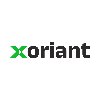Filter interviews by
Infocepts Technologies Assistant Manager Interview Questions and Answers
9 Interview questions
In Tableau, groups are used to combine related dimension members, while sets are used to create custom fields based on a condition.
Groups in Tableau are used to combine related dimension members into higher-level categories. For example, grouping different product categories into a single 'Other' category.
Sets in Tableau are used to create custom fields based on a condition. For example, creating a set of 'High Sa...
Tableau filters include context filters, extract filters, data source filters, and user filters. Execution order is top-down.
Context filters are applied first and limit the data set for subsequent filters.
Extract filters are applied next, filtering data before it is extracted into Tableau.
Data source filters are applied after extract filters, limiting the data at the data source level.
User filters are applied last...
I have worked on creating a custom sales performance chart for tracking monthly revenue
Utilized Excel to create a custom chart with data from multiple sources
Implemented color coding to highlight trends and outliers
Added interactive features for easy data analysis
Presented the chart to senior management for decision-making purposes
I optimized the performance of the dashboard by streamlining data sources, improving data visualization, and implementing automated updates.
Identified and removed unnecessary data sources to reduce load times
Utilized data caching techniques to improve dashboard loading speed
Implemented data visualization best practices to enhance user experience
Set up automated data refresh schedules to ensure real-time updates
Opt...
Rank function assigns a unique rank to each row in the result set, while dense_rank function assigns a unique rank to each distinct row in the result set.
Rank function leaves gaps in the ranking if there are ties, while dense_rank function does not leave gaps.
Rank function is used to assign a unique rank to each row based on the specified order, while dense_rank function is used to assign a unique rank to each dis...
Tree map displays hierarchical data using nested rectangles, while heat map visualizes data using colors.
Tree map organizes data in a hierarchical structure with nested rectangles
Heat map uses colors to represent data values on a matrix
Tree map is useful for showing proportions within a whole, while heat map is good for visualizing patterns or correlations in data
UNION combines the results of two or more SELECT statements, while UNION ALL does the same but includes duplicates.
UNION removes duplicates from the result set, while UNION ALL includes duplicates
UNION is slower than UNION ALL because it has to perform an additional step to remove duplicates
UNION requires the same number of columns in the SELECT statements, while UNION ALL does not have this requirement
OLAP is used for analyzing historical data while OLTP is used for managing real-time transactional data.
OLAP stands for Online Analytical Processing and is used for complex queries and data analysis.
OLTP stands for Online Transactional Processing and is used for managing real-time transactional data.
OLAP databases are optimized for read-heavy workloads while OLTP databases are optimized for write-heavy workloads.
O...
Types of joins in SQL with examples
Inner Join: Returns rows when there is a match in both tables. Example: SELECT * FROM table1 INNER JOIN table2 ON table1.id = table2.id
Left Join: Returns all rows from the left table and the matched rows from the right table. Example: SELECT * FROM table1 LEFT JOIN table2 ON table1.id = table2.id
Right Join: Returns all rows from the right table and the matched rows from the left ...
Infocepts Technologies Assistant Manager Interview Experiences
1 interview found
(10 Questions)
- Q1. DIFFERENCE B/W Groups and sets in tableau
- Ans.
In Tableau, groups are used to combine related dimension members, while sets are used to create custom fields based on a condition.
Groups in Tableau are used to combine related dimension members into higher-level categories. For example, grouping different product categories into a single 'Other' category.
Sets in Tableau are used to create custom fields based on a condition. For example, creating a set of 'High Sales' ...
- Q2. OLAP VS OLTP difference
- Ans.
OLAP is used for analyzing historical data while OLTP is used for managing real-time transactional data.
OLAP stands for Online Analytical Processing and is used for complex queries and data analysis.
OLTP stands for Online Transactional Processing and is used for managing real-time transactional data.
OLAP databases are optimized for read-heavy workloads while OLTP databases are optimized for write-heavy workloads.
OLAP d...
- Q3. What are the challenges you have faced in the current project ?
- Q4. Types of filters and execution order in tableau
- Ans.
Tableau filters include context filters, extract filters, data source filters, and user filters. Execution order is top-down.
Context filters are applied first and limit the data set for subsequent filters.
Extract filters are applied next, filtering data before it is extracted into Tableau.
Data source filters are applied after extract filters, limiting the data at the data source level.
User filters are applied last, all...
- Q5. Difference between tree map and heat map
- Ans.
Tree map displays hierarchical data using nested rectangles, while heat map visualizes data using colors.
Tree map organizes data in a hierarchical structure with nested rectangles
Heat map uses colors to represent data values on a matrix
Tree map is useful for showing proportions within a whole, while heat map is good for visualizing patterns or correlations in data
- Q6. What is the custom chart you have worked on
- Ans.
I have worked on creating a custom sales performance chart for tracking monthly revenue
Utilized Excel to create a custom chart with data from multiple sources
Implemented color coding to highlight trends and outliers
Added interactive features for easy data analysis
Presented the chart to senior management for decision-making purposes
- Q7. Rank vs rank dense in SQL
- Ans.
Rank function assigns a unique rank to each row in the result set, while dense_rank function assigns a unique rank to each distinct row in the result set.
Rank function leaves gaps in the ranking if there are ties, while dense_rank function does not leave gaps.
Rank function is used to assign a unique rank to each row based on the specified order, while dense_rank function is used to assign a unique rank to each distinct...
- Q8. Union and union all major difference
- Ans.
UNION combines the results of two or more SELECT statements, while UNION ALL does the same but includes duplicates.
UNION removes duplicates from the result set, while UNION ALL includes duplicates
UNION is slower than UNION ALL because it has to perform an additional step to remove duplicates
UNION requires the same number of columns in the SELECT statements, while UNION ALL does not have this requirement
- Q9. How you have optimised the performance of the dashboard
- Ans.
I optimized the performance of the dashboard by streamlining data sources, improving data visualization, and implementing automated updates.
Identified and removed unnecessary data sources to reduce load times
Utilized data caching techniques to improve dashboard loading speed
Implemented data visualization best practices to enhance user experience
Set up automated data refresh schedules to ensure real-time updates
Optimize...
- Q10. Types of joins and explain it with one example for each
- Ans.
Types of joins in SQL with examples
Inner Join: Returns rows when there is a match in both tables. Example: SELECT * FROM table1 INNER JOIN table2 ON table1.id = table2.id
Left Join: Returns all rows from the left table and the matched rows from the right table. Example: SELECT * FROM table1 LEFT JOIN table2 ON table1.id = table2.id
Right Join: Returns all rows from the right table and the matched rows from the left table...
Interview Preparation Tips
Skills evaluated in this interview
Top trending discussions






Interview questions from similar companies

I applied via Walk-in and was interviewed before Feb 2022. There were 3 interview rounds.

All Logical questions plus coding
(2 Questions)
- Q1. Whats your Relevant exp
- Ans.
I have over five years of experience in management, focusing on team leadership, project coordination, and operational efficiency.
Led a team of 10 in a retail environment, improving sales by 20% through effective training and motivation.
Managed multiple projects simultaneously, ensuring on-time delivery and adherence to budget constraints.
Implemented a new inventory management system that reduced waste by 15% and impro...
- Q2. Whats your Job role with previous
- Ans.
In my previous role, I managed team operations, improved processes, and ensured project goals were met efficiently.
Led a team of 10, overseeing daily operations and ensuring productivity.
Implemented a new project management tool that increased efficiency by 20%.
Conducted regular training sessions to enhance team skills and performance.
Collaborated with cross-functional teams to align project objectives and deliverables...
Interview Preparation Tips
Give relatable answers

I applied via Approached by Company and was interviewed in Aug 2023. There was 1 interview round.
(2 Questions)
- Q1. Explained below
- Q2. As given below with
Interview Preparation Tips
I felt truly blessed to have had the opportunity to engage with such knowledgeable and experienced professionals during the interview. The questions were thoughtfully crafted, focusing on fundamental concepts in finance, as well as my relevant experience from previous roles.
The interviewers demonstrated a deep understanding of the core areas of finance, creating a conducive environment for discussing both theoretical concepts and practical applications.
My overall experience with Incedo India's interview process was highly positive. It not only allowed me to showcase my skills and experiences but also provided insights into the company's commitment to excellence in the finance domain.
Tip: Believe yourself and your knowledge.
Thank You Incedo India

I appeared for an interview before Apr 2024, where I was asked the following questions.
- Q1. Process description
- Q2. Experience details

Software Developer Interview Questions & Answers
Bounteous x Accoliteposted on 11 Mar 2022
I appeared for an interview before Mar 2021.
(3 Questions)
Round duration - 60 minutes
Round difficulty - Medium
21 students were shortlisted from the 1st MCQ round and in this round we were asked to write the codes (function only) of 3 questions in 1 hour time.
- Q1.
Rotting Oranges Problem Statement
You are given a grid containing oranges where each cell of the grid can contain one of the three integer values:
- 0 - representing an empty cell
- 1 - representing a fre...
- Ans.
Find the minimum time required to rot all fresh oranges in a grid.
Use Breadth First Search (BFS) to simulate the rotting process
Track the time taken to rot all oranges and return -1 if any fresh oranges remain
Handle edge cases like no fresh oranges or all oranges already rotten
Consider using a queue to efficiently process adjacent oranges
- Q2.
Majority Element Problem Statement
Given an array/list 'ARR' consisting of 'N' integers, your task is to find the majority element in the array. If there is no majority element present, return -1.
Exampl...
- Ans.
Find the majority element in an array, return -1 if no majority element exists.
Iterate through the array and keep track of the count of each element using a hashmap.
Check if any element's count is greater than floor(N/2) to determine the majority element.
Return the majority element or -1 if no majority element exists.
- Q3.
Maximum Path Sum Between Two Leaves Problem Description
You are provided with a non-empty binary tree in which each node contains a non-negative integer value. Your task is to find and return the maximum ...
- Ans.
Find the maximum path sum between two leaf nodes in a binary tree.
Traverse the tree to find the maximum path sum between two leaf nodes.
Keep track of the maximum sum found so far.
Consider all possible paths between leaf nodes.
Handle cases where the tree has only a single leaf node.
Implement a recursive function to calculate the maximum path sum.
(3 Questions)
Round duration - 60 minutes
Round difficulty - Medium
This was a technical round with DSA based questions.
- Q1.
N-th Node From The End Problem Statement
You are given a Singly Linked List of integers. The task is to find the N-th node from the end of the list.
Example:
Input:
If the given list is (1 -> -2 -&g...
- Ans.
Find the N-th node from the end of a Singly Linked List of integers.
Traverse the list to find the length L of the list.
Calculate the position of the N-th node from the beginning as L - N + 1.
Traverse the list again to reach the calculated position and return the node's value.
- Q2.
LCA of Binary Tree Problem Statement
You are given a binary tree consisting of distinct integers and two nodes,
XandY. Your task is to find and return the Lowest Common Ancestor (LCA) of these two nodes... - Ans.
Find the Lowest Common Ancestor (LCA) of two nodes in a binary tree.
Traverse the binary tree to find the paths from the root to nodes X and Y.
Compare the paths to find the last common node, which is the LCA.
Handle cases where one node is an ancestor of the other or when one node is the LCA itself.
- Q3.
Reverse Words in a String: Problem Statement
You are given a string of length
N. Your task is to reverse the string word by word. The input may contain multiple spaces between words and may have leading o... - Ans.
Reverse words in a string while handling leading/trailing spaces and multiple spaces between words.
Split the input string by spaces to get individual words
Reverse the list of words
Join the reversed words with a single space in between
Handle leading/trailing spaces by stripping them before and after reversing
(3 Questions)
Round duration - 60 minutes
Round difficulty - Easy
Technical Interview round with questions based on DSA
- Q1.
Minimum Time To Solve The Problems
Given 'N' subjects, each containing a certain number of problems, and 'K' friends, assign subjects to friends such that each subject goes to exactly one friend, maintain...
- Ans.
Assign subjects to friends to minimize maximum workload, find minimum time for most loaded friend.
Sort subjects in descending order
Assign subjects to friends one by one until all subjects are assigned
The maximum workload will be the sum of problems assigned to the friend with the most problems
Return the maximum workload as the minimum time required
- Q2. What is grammar in the context of compiler design?
- Ans.
Grammar in compiler design defines the syntax and structure of a programming language.
Grammar specifies the rules for forming valid statements in a programming language.
It consists of a set of production rules that define how valid programs can be constructed.
There are different types of grammars such as context-free grammar, regular grammar, etc.
Example: In C programming language, the grammar specifies that a for loop...
- Q3. What is a token in compiler design?
- Ans.
A token in compiler design is a basic unit of syntax that the compiler can understand and process.
Tokens are the smallest units of a program that are meaningful to the compiler.
Examples of tokens include keywords, identifiers, operators, and punctuation symbols.
Tokens are generated by the lexical analysis phase of the compiler.
Tokens are used by the parser to build the abstract syntax tree of the program.
(3 Questions)
Round duration - 60 minutes
Round difficulty - Easy
Technical round with questions on DSA and Compiler Design mainly. He told me that you’ll be having your final HR round in some time. I knew that I was going well because he seemed to be quite satisfied with my answers.
- Q1.
Sum Root to Leaf Numbers
You are given an arbitrary binary tree consisting of N nodes, each associated with an integer value from 1 to 9. Each root-to-leaf path can be considered a number formed by concat...
- Ans.
Find the total sum of all root to leaf paths in a binary tree formed by concatenating node values.
Traverse the binary tree from root to leaf nodes, keeping track of the current path sum
Add the current path sum to the total sum when reaching a leaf node
Use modulo (10^9 + 7) to handle large outputs
- Q2. What is a regular language?
- Ans.
A regular language is a language that can be recognized by a finite automaton.
Regular languages can be described by regular expressions.
Regular languages are closed under union, concatenation, and Kleene star operations.
Examples of regular languages include the set of all strings over an alphabet that contain an even number of 'a's.
- Q3. What are NP and NP-Hard problems?
- Ans.
NP problems are decision problems that can be verified in polynomial time, while NP-Hard problems are at least as hard as the hardest problems in NP.
NP problems can be verified in polynomial time but not necessarily solved in polynomial time.
NP-Hard problems are at least as hard as the hardest problems in NP, but may not be in NP themselves.
Examples of NP problems include the subset sum problem and the traveling salesm...
Round duration - 30 minutes
Round difficulty - Easy
That was the round for which I’ve been waiting for hours
She was very friendly and nice to talk to. It didn’t seem that I was talking to the HR. It was more like talking to a friend. Finally we discussed about the pay-scale and work culture in Accolite.
Interview Preparation Tips
Tip 1 : Must do Previously asked Interview as well as Online Test Questions.
Tip 2 : Go through all the previous interview experiences from Codestudio and Leetcode.
Tip 3 : Do at-least 2 good projects and you must know every bit of them.
Tip 1 : Have at-least 2 good projects explained in short with all important points covered.
Tip 2 : Every skill must be mentioned.
Tip 3 : Focus on skills, projects and experiences more.
Skills evaluated in this interview

I applied via Naukri.com and was interviewed before May 2021. There were 2 interview rounds.

(1 Question)
- Q1. Tell me about yourself
Interview Preparation Tips

Software Developer Interview Questions & Answers
Bounteous x Accoliteposted on 27 Jul 2022
I applied via Campus Placement and was interviewed before Jul 2021. There were 5 interview rounds.
Round 1 was about 60 mins long. Basic Aptitude questions along with Programming MCQ
Round 2 had 2 coding questions with a time limit of 60mins. Intermediate level problem solving
knowledge is neccessary.
(1 Question)
- Q1. Technical Round 1 was 1hr long. Detailed Insights about my project and a few programming questions in DSA
(1 Question)
- Q1. This Technical Round 2 was 1hr long and was mainly focused on problem solving skills and a few basic programming concepts.
(1 Question)
- Q1. Three Situational questions were asked .
Interview Preparation Tips
- Data Structures
- Algorithms
- CPP
- Problem Solving

Software Developer Interview Questions & Answers
Bounteous x Accoliteposted on 12 Jun 2021
I applied via Campus Placement and was interviewed in Dec 2020. There was 1 interview round.
Interview Questionnaire
2 Questions
- Q1. 1. If you given a no return its corresponding excel no.
- Ans.
Convert given no to corresponding excel no.
Excel no starts from 1 and goes up to 16384
Excel no is calculated using column and row numbers
For example, 1 corresponds to A, 27 corresponds to AA, 28 corresponds to AB, and so on
- Q2. 2. find unique character in a window of k size in a string
- Ans.
Find unique characters in a window of k size in a string.
Use a sliding window approach.
Maintain a hash table to keep track of character frequency.
Remove characters from hash table as the window slides.
Interview Preparation Tips
Skills evaluated in this interview

I applied via Approached by Company and was interviewed before Mar 2021. There were 4 interview rounds.
DSA
About Social changes
(2 Questions)
- Q1. Tell me about yourself.
- Q2. Very basic questions
Interview Preparation Tips
- DSA

I appeared for an interview before Sep 2020.
(2 Questions)
Round duration - 90 minutes
Round difficulty - Medium
We were supposed to give test in any time between 3 PM to 9 PM.
- Q1.
Total Unique Paths Problem Statement
You are located at point ‘A’, the top-left corner of an M x N matrix, and your target is point ‘B’, the bottom-right corner of the same matrix. Your task is to calcula...
- Ans.
The problem involves finding the total number of unique paths from the top-left to bottom-right cell of a matrix by moving only right or down.
Use dynamic programming to solve the problem efficiently.
Create a 2D array to store the number of unique paths at each cell.
Initialize the first row and first column with 1 as there is only one way to reach them.
For each cell (i, j), the number of unique paths is the sum of paths...
- Q2.
Subtree Node Count Problem
We are provided with a tree containing 'N' nodes, numbered from 0 to N-1. The objective is to determine the total number of nodes within each subtree of the provided tree. Speci...
- Ans.
Given a tree with N nodes, find the number of elements in each subtree rooted at every node.
Traverse the tree using Depth First Search (DFS) to calculate subtree sizes for each node.
Use an array to store subtree sizes for each node, starting with leaf nodes having size 1.
The subtree size of a node is the sum of subtree sizes of its children plus 1 for the node itself.
(1 Question)
Round duration - 120 minutes
Round difficulty - Medium
Pair Programming Interview( this round is similar to machine coding round) it started around 11 AM
Focus Areas: Problem solving and implementation of extensions.
The pair coding round is focused on OOPS concepts. You are paired with a TWer for this round. They let you code first for an hour and in the next hour they review your code and suggest changes which would improve the code structure, readability and make it modular and reusable and functional.
- Q1.
River Crossing: Help Ninja Cross Over
Ninja stands at the start of a wooden bridge over a river. Some segments of the bridge are damaged. The undamaged segments, marked as 'safe', are listed in an array
S... - Ans.
Check if Ninja can cross the river by jumping from one safe segment to another based on given constraints.
Iterate through the 'SAFE' array and check if Ninja can make the required jumps to reach the last safe segment.
Ensure that the next jump is either 'X' - 1, 'X', or 'X' + 1 units from the previous jump.
Return 'true' if Ninja can successfully cross the river, otherwise return 'false'.
(1 Question)
Round duration - 120 minutes
Round difficulty - Medium
Students who were shortlisted from Pair Programming round was selected for this round around 3 PM. In this round there were two interviewer.
- Q1.
Middle of a Linked List
You are given the head node of a singly linked list. Your task is to return a pointer pointing to the middle of the linked list.
If there is an odd number of elements, return the ...
- Ans.
Return the middle element of a singly linked list, or the one farther from the head if there are even elements.
Traverse the linked list with two pointers, one moving twice as fast as the other
When the fast pointer reaches the end, the slow pointer will be at the middle
Return the element pointed to by the slow pointer
Interview Preparation Tips
Tip 1 : Have good grasp on OOPS since they have a round named Pair Programming round which is focused upon this.
Tip 2 : Write clean, modular and functional code.
Tip 3 : Practice Data Structures and Algorithms
Tip 4 : You should know breadth and depth of whatever is mentioned in your resume.
Tip 5 : Be loud and clear.
Tip 1 : Make single page resume.
Tip 2 : Mention relevant things on resume.
Tip 3 : Do not put any false things on resume. Projects, internships you are mentioning be ready to answer questions related to it regarding what you solved, idea, databases, design.
Tip 4 : Contribute in open source, participate in hackathons.
Skills evaluated in this interview
Infocepts Technologies Interview FAQs
Tell us how to improve this page.
Infocepts Technologies Interviews By Designations
- Infocepts Technologies Senior Executive Interview Questions
- Infocepts Technologies Associate Analyst Interview Questions
- Infocepts Technologies Associate Interview Questions
- Infocepts Technologies Data Analyst Interview Questions
- Infocepts Technologies Software Developer Interview Questions
- Infocepts Technologies Analyst Interview Questions
- Infocepts Technologies Senior Analyst Interview Questions
- Infocepts Technologies Software Engineer Interview Questions
- Show more
Interview Questions for Popular Designations
- Team Manager Interview Questions
- Operations Manager Interview Questions
- Branch Manager Interview Questions
- Associate Manager Interview Questions
- Department Manager Interview Questions
- Assistant Store Manager Interview Questions
- Assistant Branch Manager Interview Questions
- Shift Manager Interview Questions
- Show more
Overall Interview Experience Rating
based on 1 interview experience
Interview Questions from Similar Companies
Infocepts Technologies Assistant Manager Reviews and Ratings
based on 16 reviews
Rating in categories
|
Senior Executive
213
salaries
| ₹8.5 L/yr - ₹14 L/yr |
|
Senior Analyst
205
salaries
| ₹5 L/yr - ₹16.4 L/yr |
|
Assistant Manager
174
salaries
| ₹12 L/yr - ₹19 L/yr |
|
Executive Analyst
130
salaries
| ₹4.1 L/yr - ₹8.4 L/yr |
|
Deputy Manager
121
salaries
| ₹16.7 L/yr - ₹28.1 L/yr |

Xoriant

Photon Interactive

CitiusTech

Iris Software
- Home >
- Interviews >
- Infocepts Technologies Interview Questions












